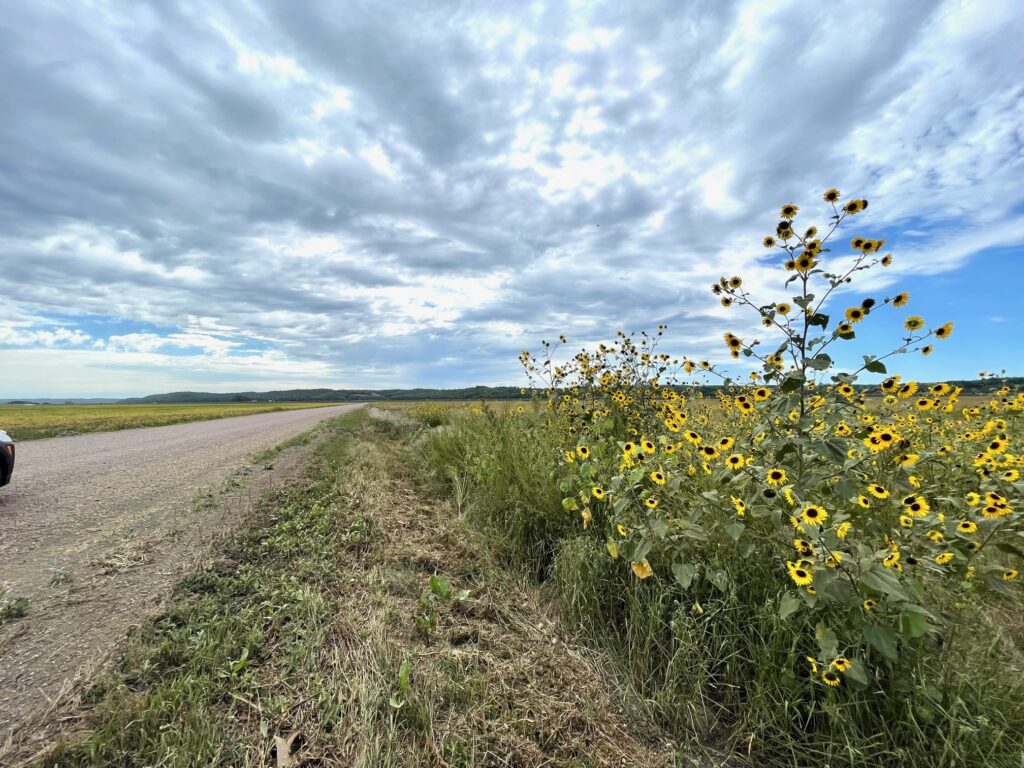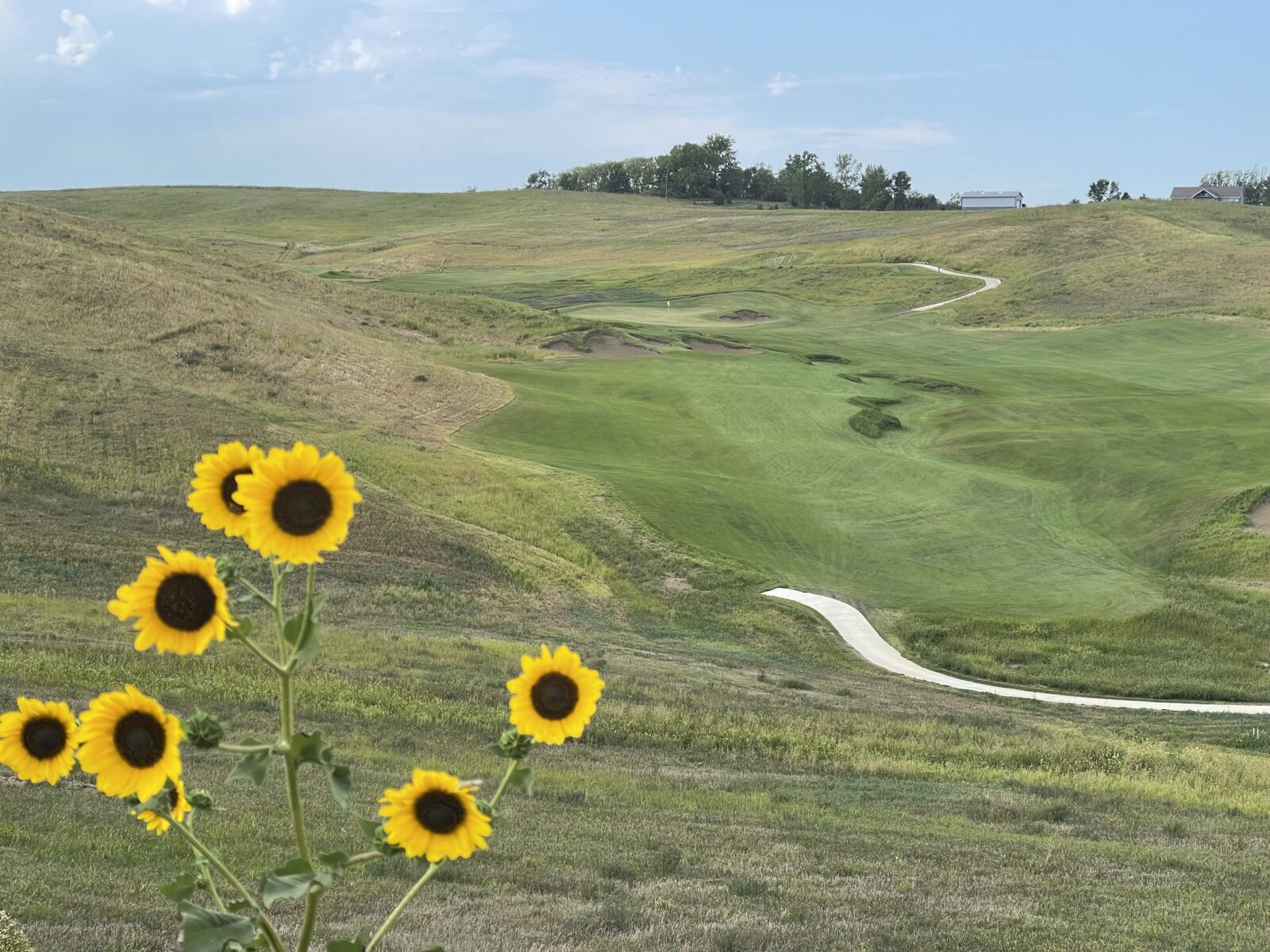Landmand Golf Club
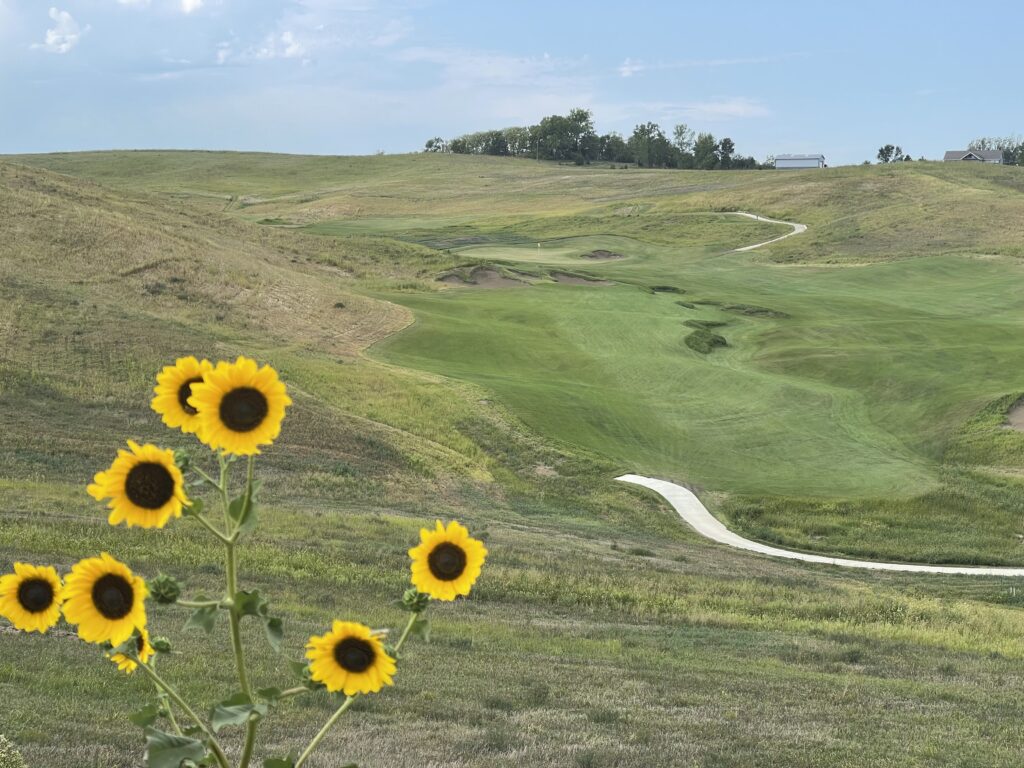
The Stone Temple Pilots, they’re elegant bachelors
They’re foxy to me, are they foxy to you?
I will agree they deserve absolutely nothing, nothing more than me
Dreaming, dream, dream, dream, dream
– Range Life, Pavement
In many cases, Tom would simply walk over a piece of ground and recommend, there and then, where tees and greens might be placed and according to taste and budget, where bunkers might be dug, and natural hazards brought into play.
– Tom Morris of St. Andrews, The Colossus of Golf, David Malcolm & Peter Crabtree
Tom Morris, the first great golf course architect, was known to spend a single day on a new site. The property would be walked, the course routed and staked – and the next morning Morris would be on a boat or horse-drawn carriage back to St. Andrews, presumably with his £5 fee in his waistcoat pocket. With this expedient and efficient method, the great man created or redesigned memorable places such as Askernish, Anstruther, Cullen, Cruden Bay, Tain and Machrihanish. Even for just a single day of work, his design fee was a bargain.
In the style of Old Tom, Rob Collins and Tad King, of King-Collins Golf, routed and staked the stunning Landmand Golf Club outside of Homer, Nebraska in about 36 hours.
“We walked it the first day and staked it the next, “says Collins, “When we realized that we only had 16 holes, we had to ask Will if we could use some of his soybean fields for the 9th and 10th.”
A wild site in the Loess Hills, (see my story from 2020, A Geological Oddity – jhartsellgolf.com/a-geological-oddity) it was thought to be “unbuildable” by some in the golf industry. The elevation change between the deep, narrow valleys and dramatic hilltops was as much as 200 feet in some places.
“Rob and Tad were so thrilled and excited after we visited the site, it was a no-brainer to give them the job,” says Will Andersen, the renaissance man (cart cleaner, range picker & drink mixer) and owner of Landmand, along with his father. Andersen is a fourth-generation family farmer in eastern Nebraska. After spending a few minutes with Will and his charming dad Bryce, their deep love of this harsh and starkly beautiful land became obvious. Andersen’s grandfather purchased the golf course property in the mid 1970’s and farmed it for a few years, before the US government started paying the family to leave it undisturbed. A passionate and talented golfer, Will spent a lot of time on the property in high school – often dreaming of golf holes in the wild, heaving terrain.
After recently seeing the result of the three years of work it took to create Landmand, it is amazing that the initial routing was determined so quickly. The imagination, vision, and confidence that it took to accomplish that – and then stick to the original plan all the way through – is inspirational. My son Jake and I were able to play the course with the designer – our threesome the only group on the course for most of the day – just two days before it officially opened for public play on September 3. A round of golf with Rob Collins is a perfect window into his philosophy of golf course design.
With the music of Pavement blaring on his bluetooth speaker, Rob blasted a drive off the first tee, a deceptively difficult uphill par five of 555 yards. His enthusiasm for golf is contagious. “That is killed! Killed!” he exclaimed. He sees fun and enjoyment as integral to golf course architecture. After walking the construction site on a bitter cold and windy day in November 2020, I was excited, but concerned. As a 15 handicap, I wondered if I would be able to break 120 at such a place. After just a few holes, my fears were alleviated.
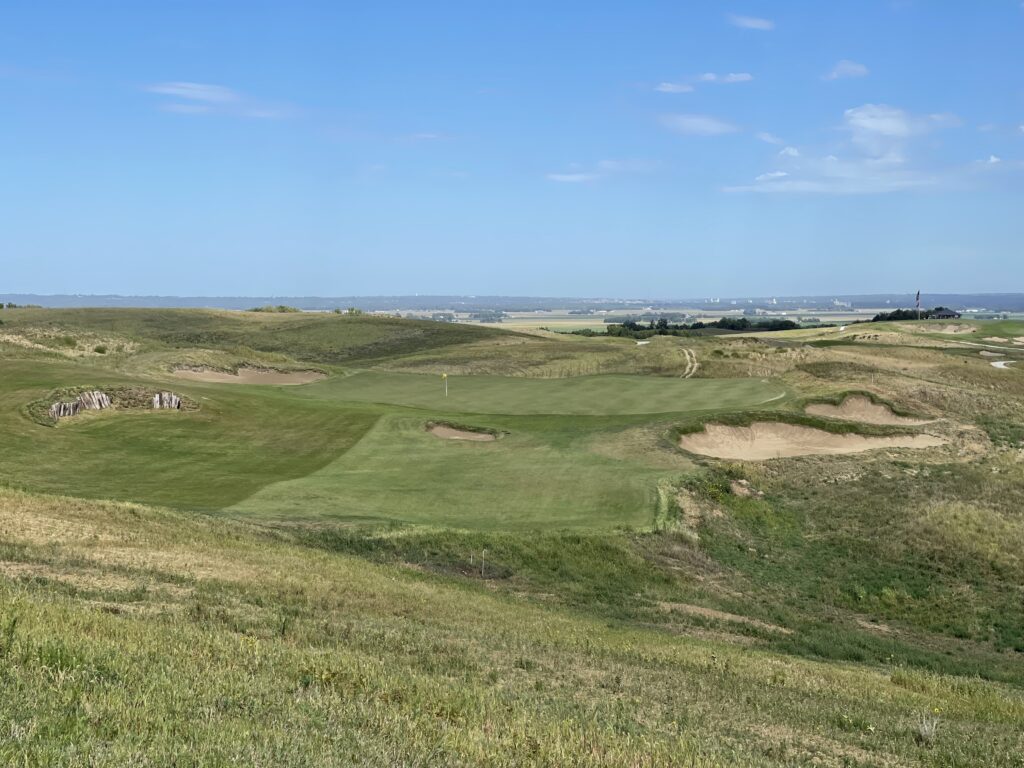
The greatest design accomplishment at Landmand might be its playability for the average golfer – all while maintaining an extremely high level of challenge for the low handicap player. I was not sure this could be achieved, but King Collins has done it. In that respect alone, it is a triumph of modern golf course design. Jake plays off a 12 handicap and scored in the mid-80’s both days. I even managed an 89 and had several pars and a birdie over the course of our visit. We only lost three or four golf balls between us. Such is the thoughtfulness of this design, that the ever-present wind is major element of the fun. Like the great courses of the UK, wind is part of the challenge, but not to the point of impossibility. There is nothing more disheartening to a golfer than losing golf balls on hole after hole. If you play the correct tees for your handicap, this will not happen at Landmand.
Comparing this place to other golf courses is almost impossible. It is, to recall my two years of high school latin, sui generis. Certainly, it is reminiscent, at times, of heroic courses like Cruden Bay in Scotland or Enniscrone in Ireland. It is easy to see the influence of the Old Course and Pinehurst #2, two of Collins’ favorite courses, in design elements of various holes. There are gathering bunkers and slopes devised to play around them – to otherwise inaccessible pin positions – principles that Dr. Alister MacKenzie espoused. Not surprisingly, Collins has long cited Mackenzie’s The Spirit of St. Andrews as one of his favorite design treatises. At the stunning 300-yard 7th, which I really want to give an official name, I hit a running chip around the cavernous front bunker, well to the right of the green. It came down off a steep slope and mound called Pat’s Forehead, trickling down inexorably over 120 feet, to a pin on the small front section of the green. It finished just 2 feet from the hole. Collins could not contain his excitement, “Jim, you did it! That’s exactly what we hoped would happen for this hole location!” From 60 yards, there was no way that shot could’ve been played directly at the pin – that would have led to a double bogey or worse. Imagination and creativity are rewarded at Landmand.
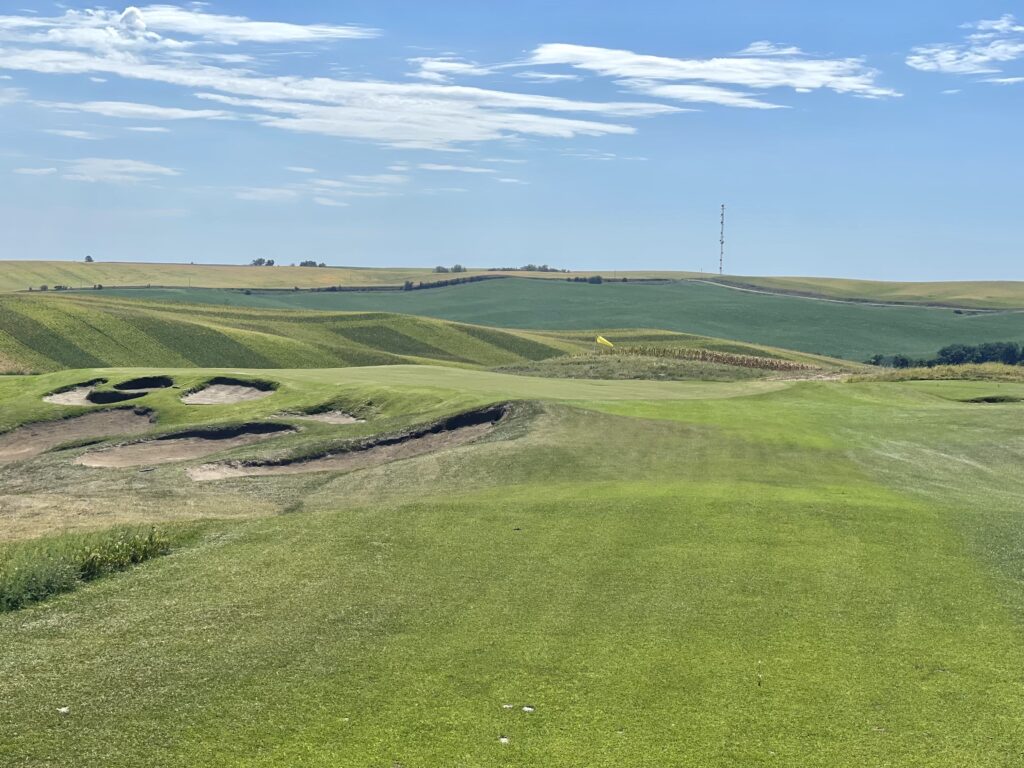
Should you be fortunate enough to make it to Homer, Nebraska, the anticipation, and thrill of discovery, should be left for your enjoyment. It almost feels wrong to describe every hole in detail, so I will not do it. There is not a weak hole on the course. Each one presents a unique and interesting challenge. When you finish, you will remember every hole. This is the surest evidence of something special.
Of course, on the lengthy drive back to Alabama, Jake and I discussed our favorite holes, specific shots, and moments:
The 355-yard 2nd was a consensus choice. If the drive can carry a deep bunker on the left side of the fairway, the ball will careen wildly down the slope to the blind green. It is reminiscent of holes like the 3rd at Cruden Bay, 10th at Elie and the 9th at Dunaverty. It is the pure essence of golfing fun.
The reveal of the seemingly infinite world of Landmand, after climbing the hill from the 4th green to the 215-yard 5th. This hole sits in the landscape as if has been there for 500 years. You can see for forever from this tee. It is a great hole.
The 100-yard 8th, at the start of Cornfield Corner. (8th through the 10th) A tiny, postage stamp, jewel of a hole that allows for an old-fashioned run up shot or a pitch to a small green surrounded by deep bunkers.
The 380-yard 10th, where the correct line is over a steep ridge and bunker to a hidden fairway beyond. The approach is then played to the largest punch bowl green I have ever seen. Every hole location can be accessed if you play off the correct part of the bowl. A laugh out loud, fun golf hole.
The 220-yard 14th, one of the best true Redan holes I have ever played. For 99% of golfers, the hole can only be accessed by playing off the steeply sloped right hand portion of the green.
The 305-yard 17th – drivable, insane and sheer fun. The hole features a massive 34,000 square foot, “Sitwell” style green.
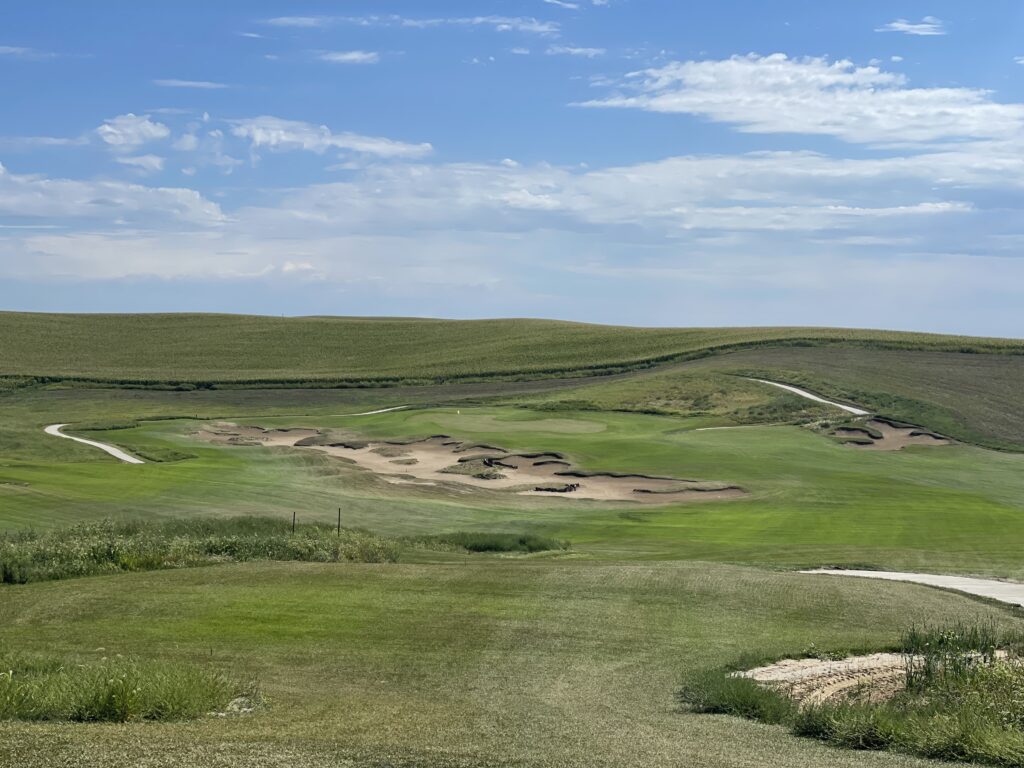
A word about the greens at Landmand – they are intricately contoured, massive and beautiful. Tad King is the one of the best greens finishers working in the golf course industry today. The bent grass was smooth and true. The course was in remarkably good shape for such early days and will only continue to improve. The Kentucky bluegrass/rye fairways provided a wonderfully tight and fast playing surface. They are a pleasure to hit from. The gray Missouri River sand, used for the bunkers, provides and unusual and appropriate accent to the massive world of green.
The next day Rob joined us again before he had to fly off, along with a group of friends from Sweetens Cove Golf Club in South Pittsburg, Tennessee. Once more, we were the only group out and played as a sevensome, David Bowie providing the soundtrack for the day. Everyone hit good shots and we played fast, even with the time taken to experiment with the multitude of shot choices around the fantastic greens. There was a chip in birdie on the 18th and an eagle on the 580-yard par 5 15th – a hole that I worried would be impossible when I visited the construction site in 2020. Dr. Kevin Moore of Athens, Georgia made the eagle, admitting, “That’s a good as I can ever hit a 3 wood.” You will want to visit Landmand with your best group of golf buddies and share the adventure.
Rob Collins believes his golf courses should be exciting, challenging and, most importantly for me, fun. Will Andersen and his friendly, welcoming staff have nailed all the details to enhance everything about the golf experience – down to the wonderfully sited clubhouse, Farmer’s Table food truck and the well-stocked halfway house. There are cabins for on-site lodging, with plans to add more. The fact that family has done all this for affordable public golf in rural Nebraska is remarkable.

During the long trek home through Missouri, we had been silent for a while. I might even have dozed off for a moment. Out of the blue, Jake suddenly made a statement,
“We have been places where the architect was given a site full of sand dunes by the f*$%*#@ ocean. An hour after we got done playing, we could only remember three or four holes. Rob and Tad took an old farm in the middle of nowhere in Nebraska and all the holes are dramatic and fun and we remember single one of them.”
That says it all for me. In the words of Stephen Malkmus, let us all hope Rob Collins and Tad King keep dreaming and dream, dream, dream, dream.
